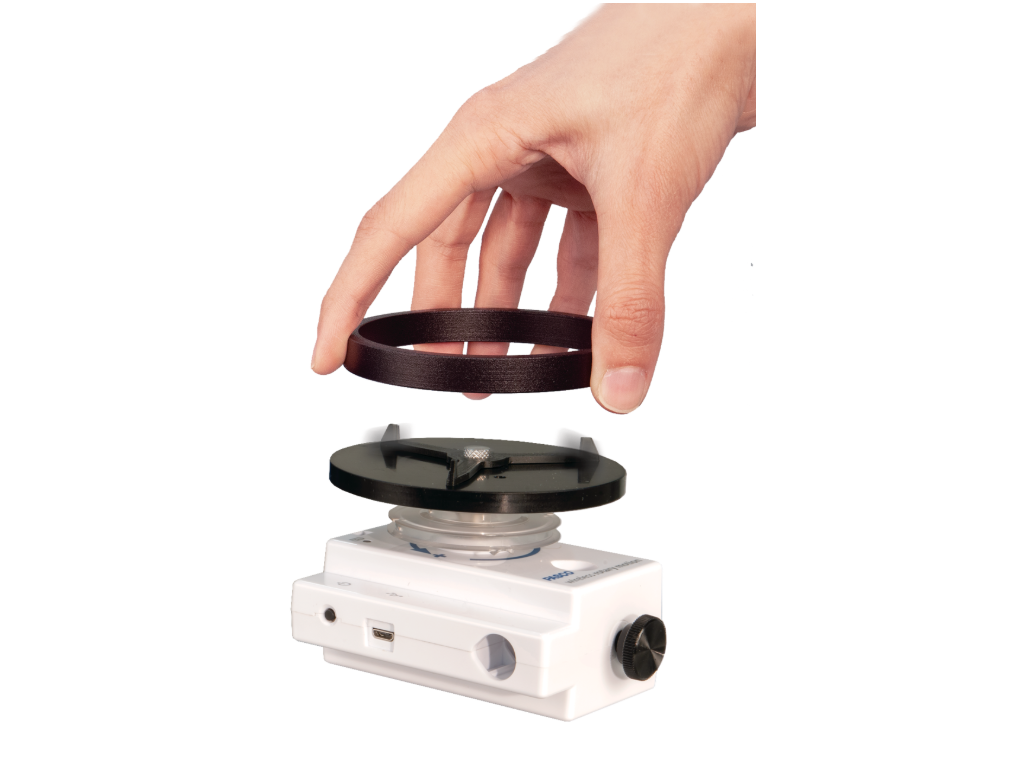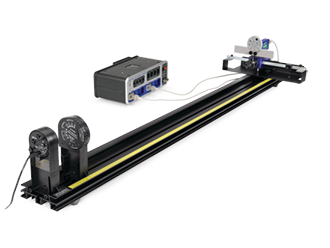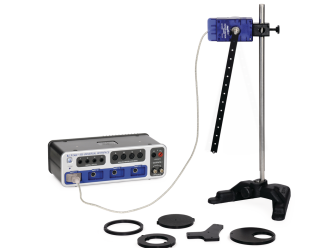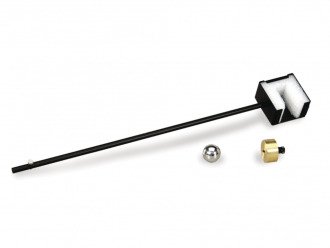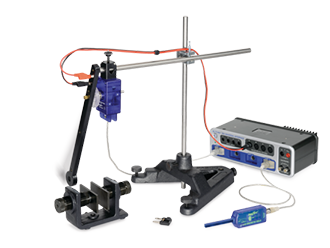Description
The Wireless Rotary Motion Sensor measures angle, angular velocity, and angular acceleration, as well as their linear equivalents. The included three-step pulley allows different torques to be applied, rotating a rigid system at different rates of acceleration. The included rod-mounting holes let you orient the sensor for different experiments. The Wireless Rotary Motion Sensor connects directly to your devices via Bluetooth or USB.
Applications
- Conservation of Angular Momentum
- Rotational Inertia
- Centripetal Acceleration
- Torque
Experiments
Perform the following experiments and more with the Wireless Rotary Motion Sensor.
Visit PASCO’s Experiment Library to view all activities for this product.
Product Specifications
| Angle resolution | 0.18° (0.00314 radian) |
| Linear resolution | 0.0157 mm (with 5 mm pulley radius) |
| Three-step pulley | 10, 29, and 48 mm in diameter |
| Shaft diameter | 6.35 mm |
| Maximum rotation rate | 30 revolutions per second |
| Optical encoder | 2000 divisions/rev, bidirectional |
| Rechargeable battery | Lithium-polymer |
| Logging | Yes |
| Connectivity | Direct USB or via Bluetooth 4.0 |
Battery & Logging
| Stored Data Points Memory (Logging) 1 | >55,000 |
| Battery – Connected (Data Collection Mode) 2 | >12 hr |
| Battery – Logging (Data Logging Mode) 3 | NA |
| Battery Type | LiPo |
1 Minimum # of data points with all measurements enabled, actual results depend on enabled measurements.
2 Continuous use in a connected state until battery failure, actual results will depend on sample rate, active measurements, and battery condition.
3 Logging until battery failure, actual results will depend on sample rate, active measurements, and battery condition.
* Normal classroom use is the sensor in active use for 20min/lab for 120 lab periods/yr.
Recommended Accessories
| Rotational Inertia Accessory | ME-3420 | |
| Pendulum Accessory | ME-8969 | |
| Mini Ballistic Pendulum Accessory | ME-6829 | |
| Wireless Sensor Charging Station | PS-3599 |
Replacement Parts
| 3-Step Pulley for Rotary Motion Sensor | CI-6693 | |
| Micro USB Cable | PS-3584 |
Also Available
| USB Bluetooth Adapter | PS-3500 |


